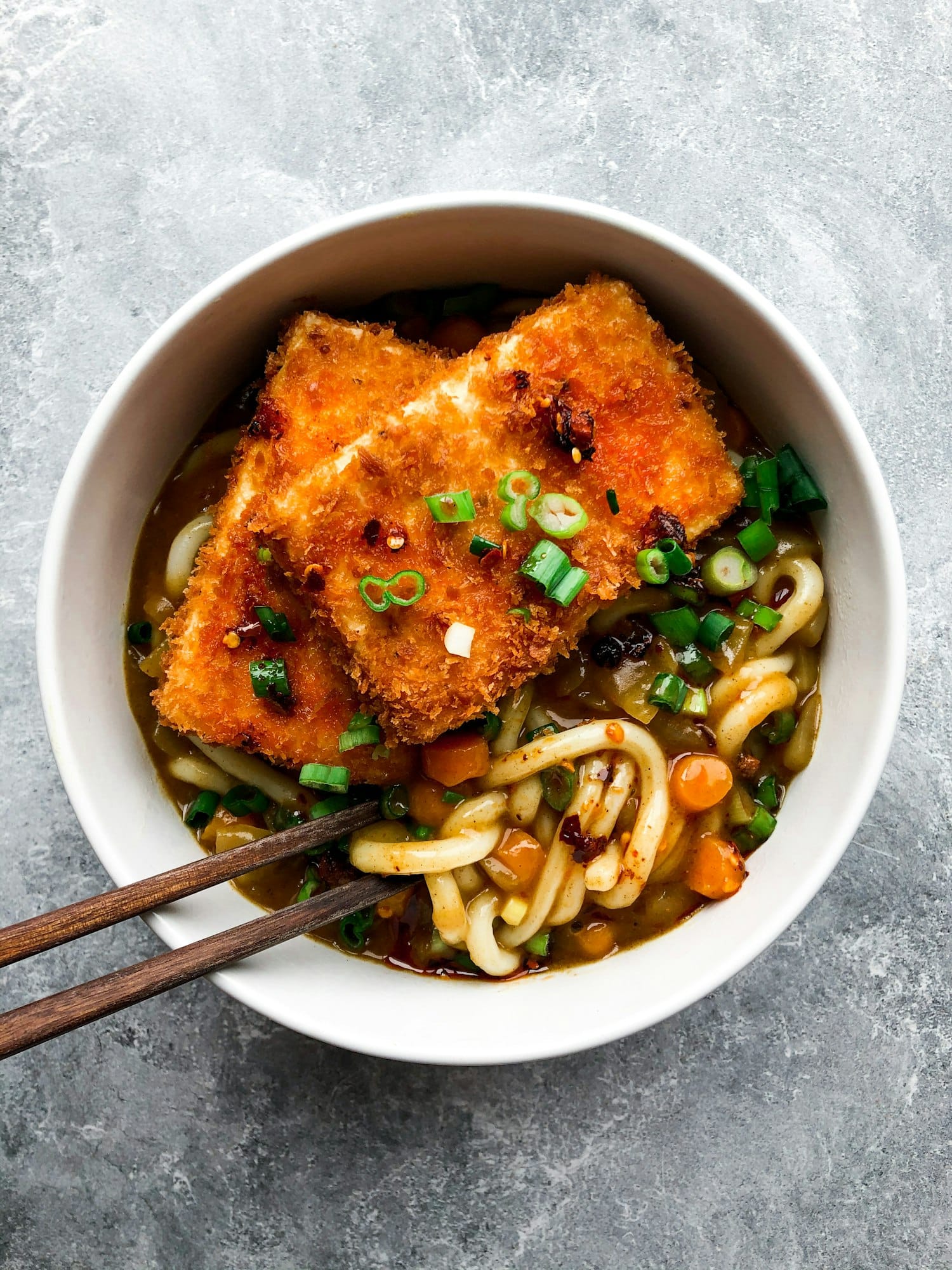How to Master the Art of an Authentic Japanese Katsu Curry with Panko-Breaded Chicken?

In the vast tapestry of global cuisine, Japanese food holds a revered place. With its emphasis on balance, texture, and presentation, it delights both the senses and the palate. One dish that perfectly embodies this delicate harmony is the Katsu Curry. This popular meal typically features breaded and fried pork or chicken cutlet served with a robust curry sauce and fluffy rice. In this guide, we dive into the world of Katsu Curry, focusing on its main component – the panko-breaded chicken. Let’s embark on a culinary journey to master the art of this authentic Japanese dish.
Decoding the Katsu Curry: A Flavorful Collision of Cultures
As you venture into the world of Katsu Curry, it’s essential to understand what makes this dish so special. The term "katsu" is derived from the word "cutlet," and it usually refers to a piece of meat, like pork or chicken, coated in panko breadcrumbs and fried to a golden crispy perfection. The curry, on the other hand, is not native to Japan but was introduced by the British during the Meiji era (1868-1912). It was then adapted to the Japanese palate, leading to a sauce that is mild, sweet, and thick compared to its Indian counterpart.
A voir aussi : What’s the Secret to a Perfectly Moist and Flavorful Zucchini Bread with Walnuts?
Together, the katsu and the curry create a dish that is comforting, rich, and full of contrasting textures. It’s served with a side of cabbage, bringing freshness to this hearty meal. Let’s delve into how to replicate this authentic dish, starting with the chicken.
Mastering the Panko-Breaded Chicken
The first step in your katsu journey involves mastering the panko-breaded chicken. Panko is a type of flaky breadcrumb used in Japanese cuisine to provide a light, crunchy texture that’s hard to achieve with regular breadcrumbs. To prepare, you’ll need boneless chicken breasts, flour, eggs, and of course, panko breadcrumbs.
A lire en complément : How to Prepare an Authentic Italian Osso Buco with a Gremolata Topping?
Begin by seasoning the chicken breasts on both sides with salt and pepper. Then, dip them first into flour, shaking off any excess, followed by beaten eggs, and finally coat thoroughly with panko. This triple-dipping technique ensures an even coating that will turn wonderfully crunchy when fried.
Heat oil in a pan until it’s hot but not smoking. Carefully add the breaded chicken, cooking for about seven minutes on each side until it’s golden brown and cooked through. Once done, remove from the pan and drain on paper towels to remove excess oil.
Crafting the Curry Sauce
The next step is crafting the curry sauce. This aromatic concoction is made using a blend of spices, vegetables, and flour to create a thick, hearty sauce. Start by sautéing onions, carrots, and garlic in a pan until they become tender. Then, add your spices – typically a blend of turmeric, cumin, coriander, and garam masala.
After the spices have been well incorporated, it’s time to add flour to thicken the sauce, followed by chicken stock. Let this simmer for about 20 minutes, then blend until smooth. The final step in creating the curry sauce involves adding a staple in Japanese cooking: soy sauce. This opens up the flavors, adding depth and umami to the mix.
Perfectly Cooked Rice and Crisp Cabbage
To complete the meal, you must prepare the accompanying elements – rice and cabbage. Start with Japanese short-grain rice, rinse it thoroughly, and then cook according to package instructions until it’s tender and slightly sticky. This type of rice is the perfect vehicle for the curry sauce, soaking up its flavors and complementing the crunchy chicken.
Next, prepare the cabbage. Japanese katsu curry traditionally comes with shredded cabbage on the side, adding a crisp, refreshing element to balance out the richness of the curry and the fried chicken. No need to do anything fancy here: simply shred the cabbage finely and serve it raw on the side of your plate.
Layering the Components: The Final Plate-Up
Now that you have all the components ready, it’s time to bring it all together. Start by slicing your fried chicken into thick strips, then serve it alongside a mound of rice. Pour your curry sauce generously over the rice and chicken, and finally, add your cabbage to the side.
With every element in place, you’re ready to enjoy a beautifully balanced, flavorful plate of authentic Japanese katsu curry. From the crunch of the panko-breaded chicken to the smooth, rich curry sauce, and the contrasting freshness of the cabbage, you’re in for a culinary journey that’s sure to delight. So grab your chopsticks and dig in – your masterpiece awaits.
A Brief Glimpse into Katsu Curry History: More than Just a Dish
In many ways, katsu curry is an embodiment of Japanese history and the country’s cultural interactions. The "katsu" part of the dish has its roots in Tonkatsu, a breaded and deep-fried pork cutlet. This dish was inspired by the European culinary tradition of serving breaded meat, introduced to Japan during the Meiji era when Western culture began to permeate the country.
The "curry" part, however, tells another story of cultural exchange. Curry was brought to Japan by the British during the same period. While the British enjoyed a spicy curry reminiscent of Indian cuisine, the Japanese adapted it to suit their palate, resulting in a milder, sweeter curry sauce. Over time, these two cultural influences merged to form the katsu curry we know today – a true testament to Japan’s historical encounters.
The katsu curry is also a reflection of the principles of Washoku (traditional Japanese cuisine), where emphasis is placed on balance and seasonality. The breaded chicken or pork provides protein, the curry sauce offers a variety of spices, the rice gives carbohydrates, and the shredded cabbage adds a fresh, vibrant element. This balance makes katsu curry not just a dish, but a representation of Japanese culinary philosophy.
Conclusion: Culinary Artistry at Its Best
There’s a reason why katsu curry has garnered admiration in Japan and beyond its borders. It’s a dish where simplicity meets complexity, where flavors and textures come together in harmony. By learning to prepare katsu curry at home, you’re not just mastering a recipe – you’re stepping into the vibrant world of Japanese cuisine, understanding its history, culture, and the artistry involved in each dish.
While the process might seem elaborate at first glance, every step is a testament to the attention to detail characteristic of Japanese cooking. From perfectly frying the panko-breaded chicken to crafting a well-balanced curry sauce, ensuring the rice is cooked just right, and taking care to present fresh, crisp cabbage, every element matters.
The final result – a plate of beautifully layered katsu curry – is a reward in itself. It is a delight to the senses, with contrasting flavors and textures that come together to create a satisfying whole. It’s a symphony of tastes that opens a window into the heart of Japanese cuisine, inviting you to savor every mouthful and perhaps, to explore more of what this rich culinary tradition has to offer.
In conclusion, mastering the art of an authentic Japanese katsu curry is a journey worth embarking on. It’s a step towards understanding and appreciating the depth and complexity of Japanese cooking, a skill that is sure to impress at your next dinner gathering. So why wait? Grab your pan, your curry powder, and your appetite, and let’s get cooking.
